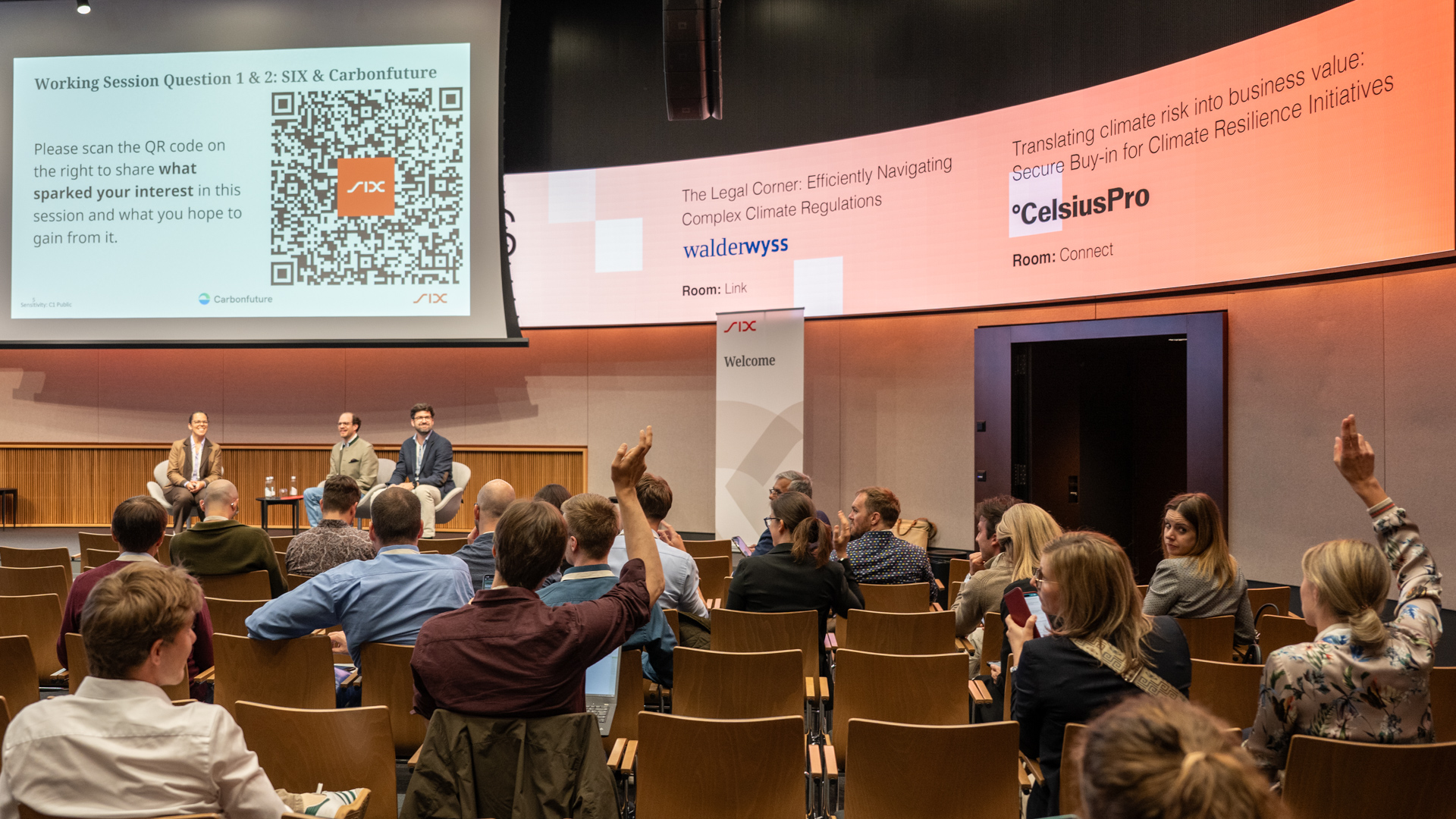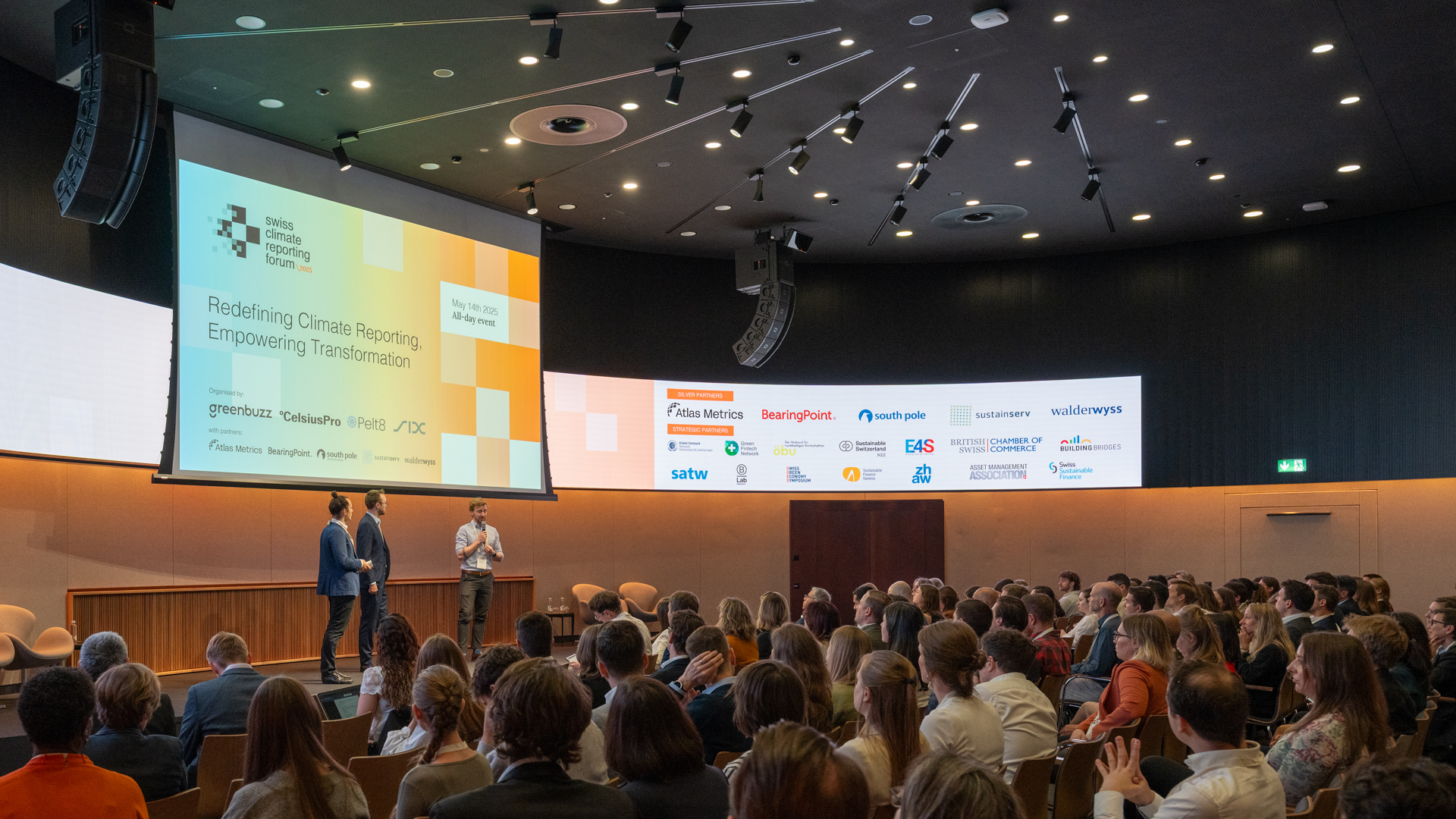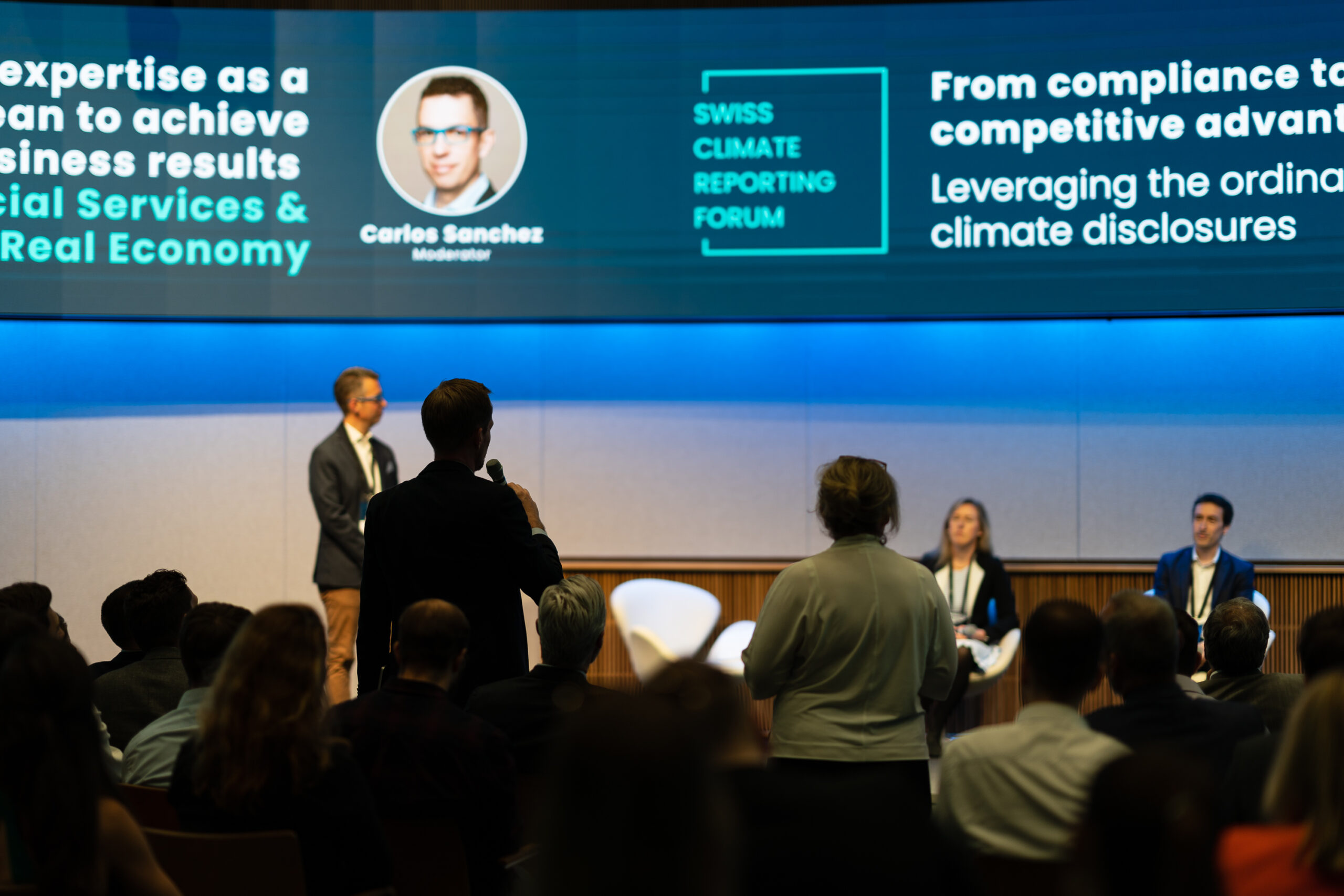Blog

Turning Insight into Action: Focus Session Highlights from SCRF 2025
Expert-led focus sessions explored how to turn climate reporting into meaningful organisational change. From regulation and data to risk and carbon removals, a clear message emerged: reporting is just the start—real impact depends on legal, technical, and cultural readiness.

From Reporting to Action: Takeaways from the Swiss Climate Reporting Forum 2025
The Forum made one thing clear: climate reporting is no longer just a regulatory requirement—it’s a strategic lever for value creation, innovation, and leadership. As the world moves from disclosure to delivery, Swiss companies and institutions must embrace reporting not just as a compliance task, but as a catalyst for action.

Purpose Over Mandate: How Education is Shaping the Future of Climate Leadership
Educational institutions may not be bound by mandatory reporting, but they are showing what authentic climate leadership looks like. By embedding sustainability into learning, reporting voluntarily, and involving students as change agents, they are creating a model the private sector can learn from.

SBTi 2.0: A New Paradigm for Corporate Climate Strategies – and How Companies Should Prepare
The release of SBTi 2.0 signals a new era for corporate climate action: one defined not by promises, but by proof. Organizations that anticipate and prepare for these higher expectations will not only avoid disruption — they will position themselves as credible leaders in a landscape where scrutiny around climate claims continues to intensify.

How to Efficiently Navigate Complex Climate Regulations
Walder Wyss explore how efficient navigation of climate rules can reduce risk, unlock opportunity, and build resilience in a fast-changing ESG landscape.

How Robust ESG Reporting Can Drive Business Value Beyond Compliance
Effective ESG reporting is becoming a key driver of business value, not just a compliance exercise. With support from advisors like BearingPoint, companies can turn ESG data into strategic insights that boost efficiency, trust, and long-term growth.

Net Zero: How Does That Actually Work?
Society will not achieve carbon neutrality solely by reducing emissions. We additionally need to actively remove CO₂ from our atmosphere. Technologies exist that can do that. How do they work? SIX experts explore.

Climate Transition Plans: A Strategic Imperative for Businesses
As global climate regulations tighten and investor expectations rise, companies must go beyond ambition and commit to action. Here, South Pole outline some of the reasons for doing so – and steps to ensure success.

The Climate Resilience Paradox: Between Awareness and Action
Recent events have highlighted that the impact of climate change does not stop at national borders or geographical boundaries. CelsiusPro explore the topic here – and its existential relevance to businesses.

